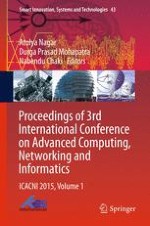2016 | OriginalPaper | Buchkapitel
Optimizing the Objective Measure of Speech Quality in Monaural Speech Separation
verfasst von : M. Dharmalingam, M. C. John Wiselin, R. Rajavel
Erschienen in: Proceedings of 3rd International Conference on Advanced Computing, Networking and Informatics
Verlag: Springer India
Aktivieren Sie unsere intelligente Suche, um passende Fachinhalte oder Patente zu finden.
Wählen Sie Textabschnitte aus um mit Künstlicher Intelligenz passenden Patente zu finden. powered by
Markieren Sie Textabschnitte, um KI-gestützt weitere passende Inhalte zu finden. powered by
